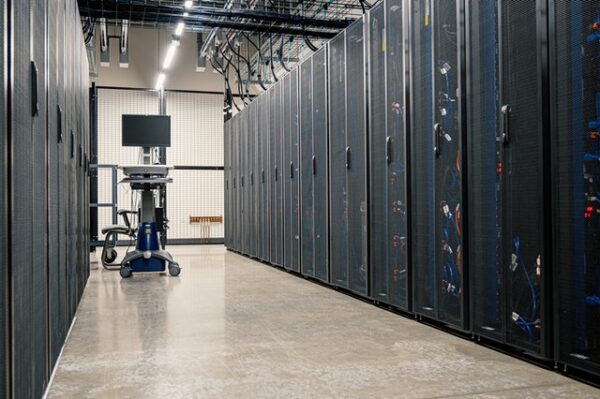The concept of virtualization took the IT industry by storm. Understanding virtualization in cloud computing will help you make the right decision whether you are trying to scale your business or reduce overhead costs, or otherwise optimize IT infrastructure costs.
During the last decade, more and more companies moved to virtualized infrastructure, favoring it over traditional hardware solutions. The rise of cloud computing, hyperconverged infrastructure, and virtualized storage has brought several benefits to startups and enterprise-level companies.
Businesses are migrating to the cloud to reduce maintenance costs, simplify their IT infrastructure, get access to the premium features and tech team expertise that cloud vendors provide. Before you decide to “commit to the Cloud,” let’s take a close look at the role that virtualization plays in cloud computing.
What Is Virtualization in Cloud Computing?
Simply put, virtualization separates hardware from software by creating an additional programmable layer. You could create virtual storage, operating systems, and even networks. Using specialized software you can run multiple virtual machine instances on a single computer simultaneously or combine a diverse assortment of physical drives into a unified virtual space.
When it comes to cloud computing, virtualization allows turning the cloud server with its OS and connected storage device into a powerful virtual platform. Its compute and storage resources can be shared with multiple users at the same time.
IMPORTANT:
Cloud virtualization enabless you with the option buy and use only those resources that you need at the time. Other benefits include fast scalability, built-in data backup, and simplified resource management.
Features of Cloud Virtualization:
- Simplified, centralized workload management.
- Allows running multiple applications that can be shared with employees, customers, and other users.
- Virtualized environments can be private, public, or hybrid.
- Enterprise-level platforms allow almost infinite scalability and don’t require you to pay for hardware and VM instances you don’t use.
- Cloud platforms provide several types of virtualization that include OS, servers, storage, desktops, networks, and other hardware.
How Virtualization Works?
To understand how the system works, let’s closely examine the types of virtualization in cloud computing.
OS virtualization allows you to create and run a virtual machine instance on the cloud platform rather than using your on-premises hardware. Running multiple virtual operating systems to simulate different environments is generally used for software testing.
Cloud vendors use storage virtualization to provide affordable storage space. They combine multiple physical storage devices located in data centers using an abstract software layer. It simplifies data management and provides enhanced backup and disaster recovery features.
Server virtualization allows dividing a single physical server into several virtual ones. In cloud computing, it is used for load balancing and advanced resource management. Running virtual servers reduces energy requirements and hardware maintenance costs. Like other types of virtualization, it maximizes the use of already existing hardware.
Desktop virtualization is used to create easy-to-access user desktop environments that are stored in the cloud. It is a very efficient solution for companies that rely on remote workers or have offices in multiple locations. Desktop virtualization eliminates the need for buying expensive hardware for every workstation.
IMPORTANT:
Virtual desktops can be accessed from any location and any device. The user data is safely stored in the cloud even if the end-point device is compromised.
Network virtualization simulates physical devices like routers and switches. You can create multiple networks on top of single cloud infrastructure. Virtual networks are convenient, can be easily managed using specialized software, and provide enhanced security.
What Makes Cloud Virtualization Different?
Some providers contrast “regular” virtualization services and cloud virtualization. However, cloud computing is impossible without virtualization. The main difference is the location of the hardware. You can use virtualization with your on-premises servers, workstations, and networks. You will also need a dedicated IT team to set up and manage your whole system
With cloud virtualization, all virtualized resources and technical assistance are provided by the cloud vendor. You don’t have to pay for the underlying hardware located in the data center. You just buy the compute and storage you need plus any additional features. With cloud computing, you can get the whole infrastructure as a service.
IMPORTANT:
IaaS lets companies build entire IT infrastructures that may include storage, OS, servers, and networks using cloud virtualization. Businesses can control their virtualized cloud infrastructure using APIs or dashboards. Users are generally allowed to create infrastructures of any size and complexity. The IaaS provider purchases and maintains the hardware.
The Key Benefits of Cloud Virtualization
If you are looking to digitally transform your business and make it more scalable and adaptable, then using virtualization services provided by cloud vendors is the way to go.
- Reduced deployment and maintenance costs are possible due to the increased efficiency of virtualized infrastructure. Aging and faulty hardware is a money pit. It’s better to let the cloud provider deal with hardware-related costs. You also don’t have to hire a large team of IT experts to manage your infrastructure.
- Virtual environments provide 99% uptime. Instead of fixing or swapping broken hardware, you can recover your whole system in minutes by running a VM clone.
- Your IT personnel doesn’t have to waste their time dealing with mundane hardware-related tasks and can focus on goals that bring value to your business.
- You don’t have to restructure your production environment any time you have to run a virtual server or a virtual machine. All virtual instances are segmented and isolated. It makes software testing much faster and safer.
- Virtualized cloud computing helps you lessen your impact on the environment. You will need much less energy, and physical space to run your infrastructure.
Conclusion
Virtualization is the technology that underpins cloud computing. Most vendors allow you to build an entire IT infrastructure using private and public clouds. Cloud virtualization provides a host of benefits, including reduced expenses, simplified management, better use of resources, and improved system reliability.

